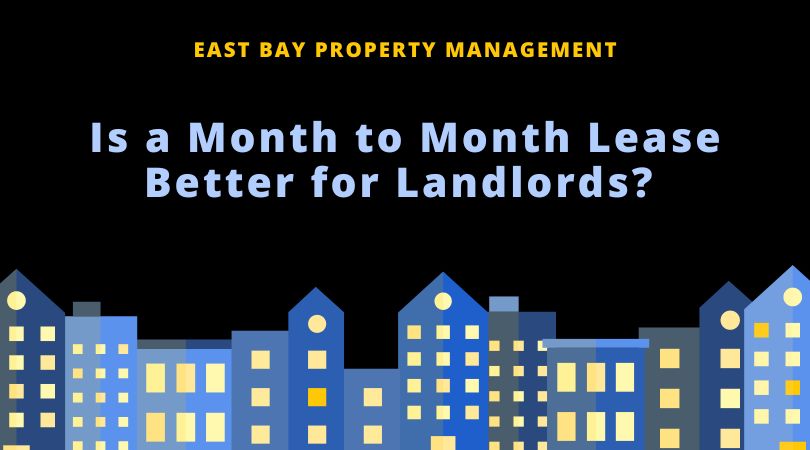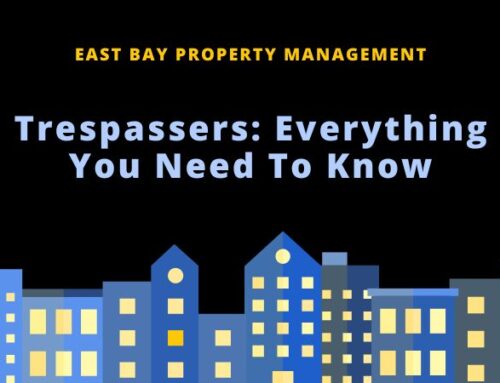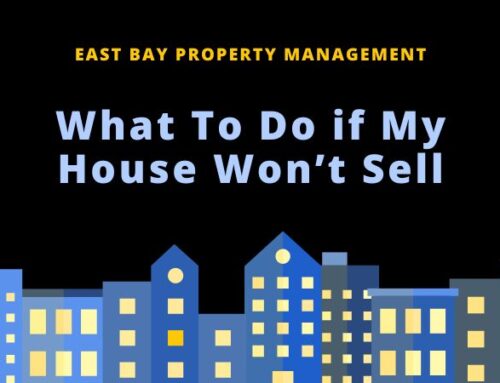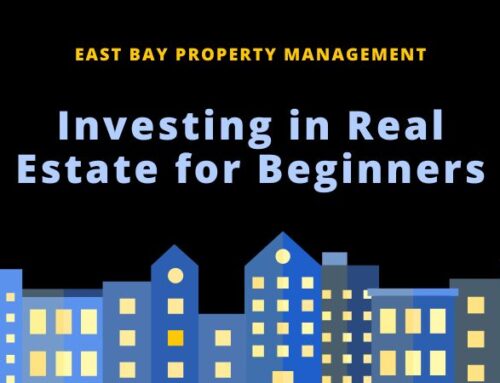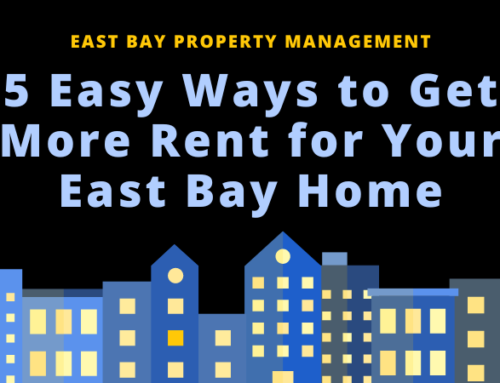There are two types of rental agreements: a lease agreement and a month-to-month agreement. A lease agreement is long-term and runs anywhere between 6 months and a year. A month-to-month agreement, on the other hand, is short-term, and only runs month to month.
In today’s blog, we at East Bay Property Management will focus on month-to-month agreements. The following are answers to commonly asked questions regarding month-to-month agreements.
How Long Does a Month-to-Month Agreement Run?
A month-to-month rental agreement runs until either party serves the other with a termination notice. The notice must be at least 30 days. In most cases, this type of rental agreement is used to extend existing leases. But it’s also possible for both landlords and tenants to agree to a month-to-month agreement from the onset.
What are the Pros of Using a Month-to-Month Agreement?
As a landlord, renting your property on a short-term basis can provide you with the following benefits.

Flexibility in the Lease Agreement
If you’re looking for overall flexibility, then a month-to-month lease for your real estate would be ideal. If you’re only going to rent out the property for a short while, for instance, you may still be able to earn a decent passive income without tying yourself up with a long-term commitment.
In addition, month-to-month agreements have a flexible end date. To terminate the tenancy, all you have to do is serve the tenant with a 30 days advance notice. On the contrary, a standard lease would tie you down for a long time, usually a year.
More Control
When renting out your property for the first time, you may not have an effective screening process. So, you may find yourself gambling when it comes to tenant selection.
Luckily for you, even if you land a difficult tenant and have to manage complaints, all you’d have to do to get rid of them is serve them 30 days’ advance notice. But this would not be possible when renting out your property on a long-term basis. You’d have to evict the tenant through a state-specific process, which can be stressful and time-consuming.
Ability to Increase Rent Prices
When renting your property on a short-term basis, you’d be able to raise rent pretty easily. All you’d have to do is provide the tenant with a 30 days advance notice. According to California’s new rent control law, the 30 days notice would only apply when the rent increase is 10% or less.
But when the rent increase exceeds 10%, then you must provide the tenant with a 90 days advance notice. This also gives you some more control with respect to tax seasons.
No Penalty for Breaking the Lease
Once you have properly notified your tenant, you’re liable for ending the tenancy early. After all, with short-term agreements, it’s usually expected that either party will end the tenancy at some point.
The best time to offer a month-to-month lease is during the hot summer months. At this time, demand for rentals is usually high. You can end a lease and then rent it out at a higher price for more margins.
Ability to Retain Quality Tenants
It’s the goal of every landlord to retain great-quality tenants and keep them happy through great amenities and communication. That is, those that pay rent on time, care for their rented premises, and notify of maintenance issues on time.
Once you have a great tenant in place, you can keep on renewing their lease until they eventually decide to leave.

What are the Cons of Using a Month-to-Month Agreement?
Month-to-month rental leases also have their fair share of downsides. They are as follows.
Uncertainty of End Dates
In some situations, a flexible end date may be desirable. But this flexibility may bring with it uncertainty which might lead to a high vacancy rate. Vacancies will mean having to spend both time and money finding replacement tenants.
Instability in Rental Income
Having great tenants is always a good boost to any landlord’s bottom line. But only having to keep them on a short-term basis isn’t as beneficial as it would be on a long-term basis. Short-term tenancies also mean that the rental income is less stable.
Short Notice to Fill Vacancies
Having only 30 days to find new tenants can be stressful. Being on a time crunch would mean working under pressure to find new tenants. This would certainly have an impact on the quality of tenants you rent to, as you may not have ample time to properly screen prospects.
Do Tenants Have to Sign a Month-to-Month Rental Agreement?
As a general rule of thumb, every rental agreement must be in writing and be signed by both parties. There is an exception, though, under Chapter 92 of the Texas Property Code. It specifies that rental agreements don’t have to be necessarily written to be valid. Oral agreements, too, can be valid.
What does a ‘Holding Over clause’ Mean in a Lease?
If there is a Holding Over clause in the rental agreement, it simply means that the lease will continue on a monthly basis until it expires. This means that both of you won’t have to keep signing a new document every month.
How Does the 30-day’ Advance Notice Work?
30 days advance notice is the minimum amount of time that the party in the agreement must provide the other in order to end the lease. Of course, this means that either party can provide more time to terminate the lease without hiccups.
The 30 days advance notice also applies in other scenarios other than ending a lease. It also applies when changing the terms of the agreement, such as when raising the rent amount by 10% or less.

Bottom Line
Just like a long-term lease, a month-to-month lease has its fair share of pros and cons. But whichever option you decide to go with, make sure it aligns with your investing goals. For expert help in drafting a month-to-month lease or any other aspect of property management, East Bay Property Management can help.
East Bay Property Management is a leader when it comes to property management in East Bay and the surrounding areas. Get in touch with us today to learn more!

